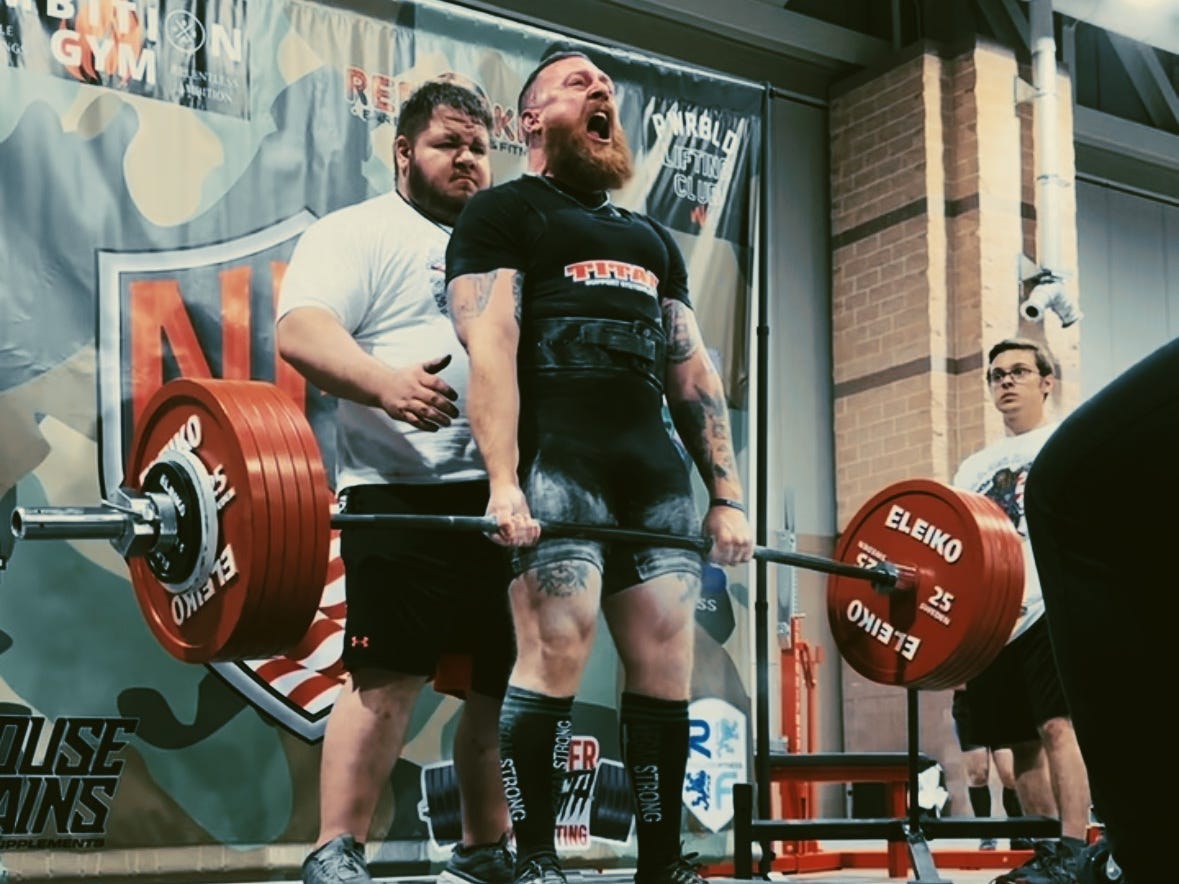
-
Powerlifter Nick Squires has been eating a vegan diet for nearly a decade.
-
At the same time, he’s earned multiple championship awards and state records in the sport.
-
He said plants provide plenty of protein and energy, and shared his typical diet and training.
When Nick Squires started trying to get in shape nearly a decade ago, he never expected to break records, let alone do it on a completely plant-based diet.
Now 37, the California resident has multiple championship wins under his belt, in addition to setting state records in his class for a massive 550 pound squat, 617 pound deadlift, and 1,515 pound total.
But he initially just wanted to get a little more fit after his daughter was born, and was training for obstacle races before he ever walked into a powerlifting gym.
“I decided didn’t like the running but liked the weights,” Squires told Business Insider.
Around the same time, Squires was involved in dog rescue, and said the process prompted him to start cutting meat out of his diet for ethical reasons.
“I had this cognitive dissonance about spending time, money, and energy helping these animals and eating other animals. It weighed on me,” he said.
Over a year, he gradually transitioned to a fully plant-based diet, which provides plenty of fuel for big lifts: Squires has since put up all-time personal bests of 374 pounds on the bench press, a 611 pound squat, and a 666 pound deadlift.
Here’s his daily routine for moving big weight.
His typical diet includes more than 220 grams of protein from plants
Like most vegan athletes, Squires is used to questions about how he gets enough food, and enough protein, to build muscle and strength on a plant-based diet.
A typical day of eating for him includes:
-
Breakfast: Oatmeal, vegan protein powder, and banana
-
Lunch: A stereotypical bodybuilder-style meal, with a twist — broccoli and rice, but with vegan “chicken” instead of traditional poultry.
-
Pre-workout snack: a peanut butter and banana sandwich
-
Dinner: protein pasta and vegan sausage
In total, Squires aims for around 220 grams of protein per day (roughly one gram per pound of body weight) — in this example, he said it adds up to closer to 240 grams.
Recent research suggests that 0.7 grams per pound of body weight per day is the optimal amount of protein for building muscle, which is in line with what dietitians typically recommend.
While not all vegan proteins are considered “complete” proteins, combining different plant sources of protein can provide all the essential amino acids. Vegan protein sources include brown rice, peas, soy, other legumes, seeds, and even grains like oats and quinoa.
Plant-based foods are also nutrient-dense, rich in vitamins, minerals, and compounds called phytochemicals providing health benefits like lower inflammation, and a healthier heart, brain, and digestive system.
Squires said that he recently suffered a major injury that kept him out of the gym, but was able to recover in about half the time doctors expected, although he caveated that he has no way of knowing if it was related to his diet or not. However, other high-profile athletes have attributed faster recovery and better resilience to plant-based diets.
He lifts heavy and prioritizes active recovery
Squires competed in his first powerlifting meet in Huntington Beach in 2016, finishing second in his class despite primarily just looking to get some experience.
“It wasn’t about winning, it was about seeing what I could accomplish. I learned more in the six hours of the meet than in two years of training,” he said.
Since then, he’s gone on to multiple state and world championships. Squires competes in “raw” powerlifting, which is done without the use of compression equipment such as specialized suits that can assist in moving more weight (although some gear, such as wrist wraps for bench press, is allowed).
His training routine, set with the help of powerlifting coaches, involves three to four days in the gym per week for about 90 to 120 minutes each session.
To move thousands of pounds in a workout, Squires said the key is rest, both between sets and between workouts.
“When taking 500 pounds off the rack and moving it, it takes a lot out of your body, so don’t want to rush into your next set,” he said.
He added that rest day are key to allow the muscles to build back stronger and prevent overtraining which can stall progress.
“People have the idea that you have to be in the gym every day. Half the work is the body recovery,” he said.
Squires said he spends time on a Peloton doing active recovery, periods of light movement that can improve blood flow to speed muscle healing, the rest of the week.
Near competition, his training cycle eases up on volume so he’s performing fewer reps, giving his muscles time to be in peak shape for the meet.
Squires said that what he loves about powerlifting is the focus on performance instead of aesthetics,
“My whole life, I’d sign up for a gym and do bodybuilding and stuff. The fitness industry expectations lead you to think your body will change rapidly and when it doesn’t, it’s discouraging,” he said. “With powerlifting, there’s tangible feedback that you’re getting better because it’s about the numbers that are going up. What you’re accomplishing matters a lot more than how you look.”
Read the original article on Business Insider
Source: bing.com





















